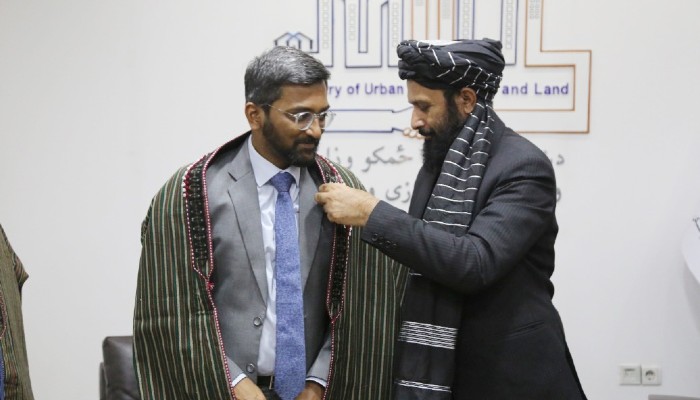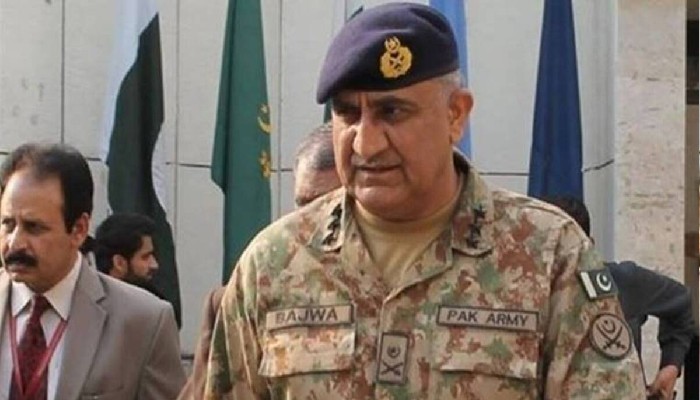Ties between Pakistan and the Taliban seem to be worsening as the latter is not able to repose its trust on Islamabad, seen by it as the root cause of problem afflicting the Afghan society today
Last weekend in their most audacious and serious attack, 33 TTP (Tehreek-e-Taliban Pakistan) militants, under detention in the Bannu Counter terrorism Department Centre in Khyber Pakhtunkhwa overpowered guards and held them hostage.
Initially they demanded a safe passage to Afghanistan, which they later changed to moving them anywhere in North or South Waziristan. The TTP claimed responsibility for the incident and exhorted its militants not to surrender. The facility was stormed, all militants killed alongside few of Pakistan’s security forces.
A day after successfully regaining control at Bannu, there were reports of militants raiding a police station in Wana and escaping with weapons in a police van. It is evident that the intensity of terrorist attacks in Pakhtunkhwa has been on the rise.
There has also been an increase in firing incidents between Pakistan and Afghan forces along the Durand Line. In the past one month 19 civilians have been killed and several injured in two border incidents. Pakistan responded resulting in casualties on the Afghan side. Incidents of firing are forcing Pakistan to shut border crossings, angering Kabul. In early December, Pakistan’s embassy in Kabul was attacked with Islamabad claiming it as an attempt to eliminate its head of mission.
Pakistan has repeatedly summoned the Afghan Chargé d'Affaires to register protests. The Taliban have admitted that their fighters have spent their lives handling violence and are unused to negotiations, thereby hinting that border incidents would continue.
Several delegations from Pakistan have visited Kabul to convince them to curtail border incidents and stop supporting the TTP. Pakistan Deputy Foreign Minister, Hina Rabbani Khar also led a delegation to Kabul but to no avail. Pakistan has sent delegations of clerics, hoping they would convince the Taliban.
Pakistan even attempted to negotiate a ceasefire with the TTP on the advice of the Taliban. While TTP cadres have risen to around 4000-5000, the IS-Khorasan has also witnessed a significant rise in manpower. Increased presence of both groups is an added concern. The TTP also claims that a few Baloch groups have sworn allegiance to them.
Pakistan, which at one time celebrated the return of the Taliban, is now complaining in the UN against terrorism emanating from Afghan soil. Pakistan Prime Minister Shehbaz Sharif stated at the UN General Assembly, “Pakistan shares key concerns of the international community regarding threats posed by the major terrorist groups operating from Afghanistan.”
Pakistan Foreign Minister Bilawal Bhutto stated in the US in an interaction with the Atlantic Council, “As far as the TTP (Tehreek-i-Taliban Pakistan) is concerned, it’s absolutely our red line. It is something that we will not tolerate.”
This has been resolutely condemned by the Kabul dispensation. The Pakistan leadership has also begun accusing the Taliban of not adhering to the Doha agreement on human rights and girl’s education. These are evident signs of a relationship gone sour.
The re-emergence of the TTP in Swat is a matter of concern for Pakistan. There were reports that during peace talks few TTP members were permitted to enter Swat by the Pakistan army, since denied. Currently, there are daily reports of increased fighters moving into the region. Pakistan has witnessed a 50% increase in terrorist strikes since the Taliban gained power in Kabul.
Pakistan had, since the US intervention viewed Afghanistan through the prism of India. It believed that India was using Afghan soil to fester terrorism in the country and was creating an anti-Pakistan environment. It had accused India of funding and arming the TTP and Baloch, an accusation which has no value currently, as it now accuses the Taliban of the same. Pakistan was always concerned about Indo-Afghan ties.
With Afghanistan requesting India for increased investments and recommencing projects, doubts have begun to rise in Islamabad and Rawalpindi of India ousting Pakistan from its prominent position in Kabul. Afghanistan has promised security to Indian diplomats as also to Indian investments, something it has never announced for Pakistan nationals adding to concerns of increased Indian influence.
Pakistan had wrongly presumed that the Kabul dispensation would be beholden to it for its support during US presence in the country. It believed that the Taliban would do its bidding. So strong was the belief that Imran even offered to send Pakistan bureaucrats to run the country and Qureshi organized funding events for Afghanistan, apart from insisting that the US release Afghanistan’s locked dollars in US banks. Another major cause for deterioration of relations has been that Pakistan considers Afghanistan not as an equal but a client state.
Afghanistan believes that Pakistan is siding with the US against it. The Afghan deputy foreign minister, Sher Abbas Stanekzai, accused Pakistan of permitting US drones to use Pakistan airspace against it, including in the elimination of al Qaeda leader Ayman al-Zawahiri. Within Afghanistan, Pakistan remains disliked because of its belief that it can control the landlocked country. In addition, Pakistan has repeatedly been stating Afghanistan is its strategic depth, an aspect which enhances hatred from Afghans.
The Taliban’s distrust of Pakistan was made evident when Mullah Yaqub, the Taliban defence minister and son of Taliban founder Mullah Omar stated in an interview that Afghanistan is willing to send its army personnel to India for training. If it does materialize it would mark the end of Taliban’s dependence on Pakistan, and emergence of Indian influence in the country.
Pakistan was a frontline state and much in demand as long as the US remained in Afghanistan. With its withdrawal, Pakistan has lost its global standing. The US no longer exploits Pak for its engagement with the Taliban. Thus, Pakistan’s strategy of pushing the US out to regain its strategic space has backfired.
Pakistan now has limited options, primarily engaging with the Taliban from a position of weakness. It could continue fencing and strengthening the Durand Line, which could only exacerbate the dispute. Alternatively, it could take the fight against the TTP onto Afghan soil employing its artillery, drones and air power, which could result in collateral damage and add to tensions.
Pakistan could also request the US to employ its resources to target TTP camps. However, each of them could further impact Pakistan-Afghan relations. Finally, Pakistan could recommence negotiations with the TTP without involving the Taliban. This may only embolden the TTP and enable it to grow in confidence.
The ideal option and a long time Afghan demand has been to stop fencing the Durand Line as also open additional crossing points enabling Pashtuns on both sides to move freely. This may reduce Pakistan-Taliban tensions but enhance the ability of the TTP to target Pakistan forces.
None of the current choices are risk-free. The way it appears is that Pak will face increased attacks from an emboldened TTP backed by the Taliban. Simultaneously, Afghan forces will keep attacking Pak police and army deployed along the Durand Line seeking to stop construction of the fencing.
This, coupled with an economic slowdown and financial crisis, is likely to add to their concerns. Pakistan’s emphasis for the moment, will remain its western borders, forcing it to draw down its activities on its Eastern front against India and in Kashmir. In the latest, Kabul renewed its intent to curb cross border terrorism. Will it, despite an unrelenting Pakistan remains questionable.
*** The writer is a security and strategic affairs commentator; views expressed are his own











 Contact Us
Contact Us
 Subscribe
Subscribe
 News Letter
News Letter
 Instagram
Instagram Youtube
Youtube